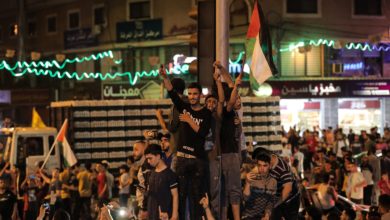On a cold night in Iraq, two fellow soldiers and I were awakened by our superiors and told to interrogate a prisoner who had just been arrested. Whoever brought in the detainee insisted that it could not wait until morning, so we irritably left the warmth of our sleeping bags and set off into the darkness.
When we arrived at the detention facility, there was a young Lieutenant waiting for us. He brought the prisoner there.
|
He arrived on a stretcher. The Lieutenant told us with a sadistic smile that this prisoner tried to flee a traffic checkpoint he was working that night, and he proudly proclaimed that he filled the Iraqi man’s car with bullets as he tried to drive away.
The traffic checkpoint was one of thousands that operate daily in Iraq. The road is blocked off, and anyone driving on the road is searched and questioned. We had gotten used to questioning prisoners who were arrested for the slightest suspicion at these checkpoints. Many were arrested for carrying a large amount of cash—a common practice for store owners and vendors.
According to the Lieutenant, there was a long line of cars waiting to pass through his checkpoint. Towards the end of the line, a car that had been waiting pulled out and turned around, driving away from the checkpoint. This act was proof to the Lieutenant that the driver of the vehicle must be guilty of something and trying to escape, so he raised his rifle and fired into the night.
When I walked in to the cell where he was being kept, it was dark, and I couldn’t see him but I could hear him breathing. He was breathing heavily, almost hyperventilating, and his breaths were interrupted by shaking and sobbing. As we followed the sounds, I was able to make out a figure lying on a stretcher against the wall.
We approached the man and clicked on our flashlights. The first thing I saw was the gauze wrapped around his neck, caked in blood, where he had been shot. My first thought was that he was lucky to be alive, but I could tell that he was not thinking the same thing.
I could see streams of tears along the sides of his face, leading to the stretcher that was too small for his large body. He was shaking furiously, his bare feet sticking out from under a thin blanket that was not large enough to cover him. I knew that he was not only shaking from the cold, but from the fear of death, torture, or life in prison. Every Iraqi knows that people get snatched up in the middle of the night; some never seen again, some returning with stories of intense interrogation techniques.
We told our translator to ask him why he had run away. He responded, struggling through gasping breaths and flowing tears. He said he was tired of waiting in the long line in the middle of the night, and decided to just go back home. Nothing suspicious was found in his car.
Instead of making it back home he ended up in that cell, alone in the dark with only blood soaked bandages to keep him warm. This was the price he paid for being impatient.
He cried as he pleaded with us, repeating over and over that he had never done anything wrong. He said he was in pain and begged to be taken to a hospital. I have never seen a man so weakened, terrified, and defeated.
When we left, the Lieutenant was still proudly boasting about his accomplishment. I wondered how many more Iraqis would be wounded or killed by this man, or by the soldiers he commands. This was the example he set for his subordinates in the field.
As I tried to go back to sleep that night, I could think only of the man down the street in a cold cement room with a bullet wound in his neck. I tried to imagine what he felt, how he thought of the U.S. occupation, and how this mission could possibly be conceived of as “liberation” or maintaining “peace and security.” I’m sure we were both kept awake that night—me by confusion and frustration, and him by fear and desperation.
The next morning, I was instructed to go back to the detention facility for more interrogations. There was, as always, a constant flow of scared, shaking, and sobbing prisoners. The man I had seen the previous night was a unique case only insomuch as his wounds were visible.
Through his broken words, his convulsing body, his tears, and his blood, the innocent Iraqi man on the stretcher showed me what every prisoner felt. That night he taught me what the Iraqi people already know; he taught me who the real enemy was.






